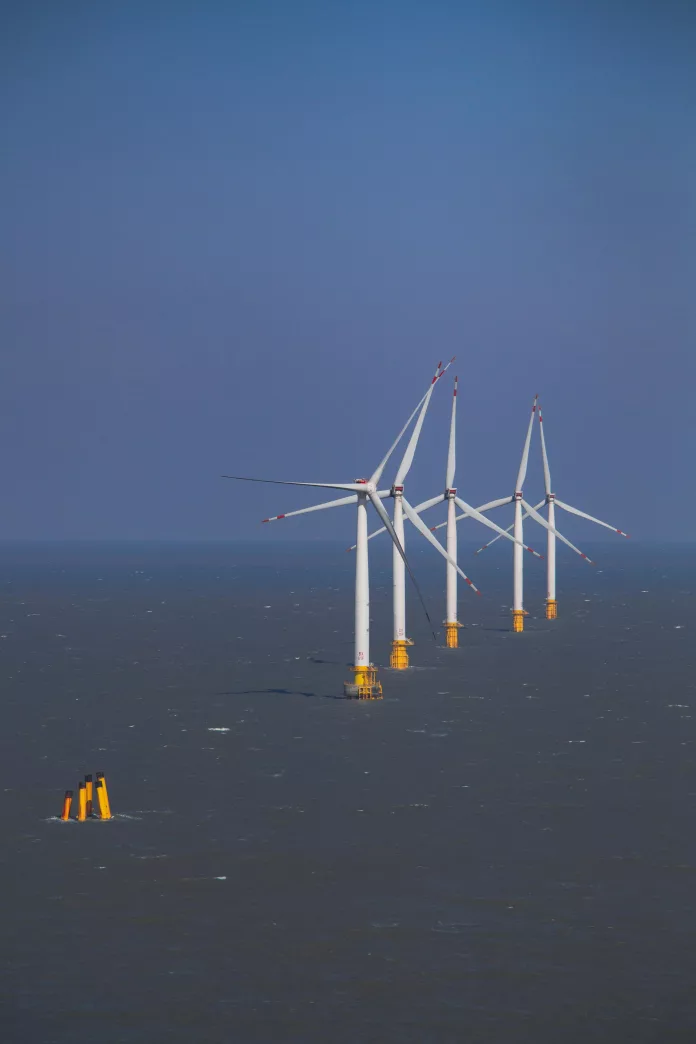Reports of a decline in the US offshore wind sector might have surfaced last year, but such sentiments are premature at best. Defying expectations, the industry demonstrates resilience, buoyed by Avangrid‘s ambitious plans to introduce two sizeable wind farms in New England, with a combined capacity of 1,871 megawatts. The puzzle now lies in sourcing adequate vessels and cranes to manage these extensive projects.
The Wave of Growth in New England’s Offshore Wind
In recent developments, Avangrid—a subsidiary of the Spanish energy company Iberdrola—has joined the league of firms setting sights on New England’s rich potential for offshore wind. This region is home to considerable populations with a high demand for energy, which is currently met largely through imported fossil fuels. Adding to the momentum, the US Department of the Interior recently greenlit the impressive Sunrise Wind project, a 924-megawatt undertaking equipped with 84 turbines, to be executed jointly by Ørsted and Eversource.
Avangrid is strategically positioned to lead this charge due to its decision to revive two prior projects that were unfortunately suspended last year, contributing to the industry’s perceived setbacks in 2023. Now, turning the tide, the company’s Vineyard Wind project, with an 806-megawatt capacity, has already commenced delivering electricity to the local grid on a trial basis using a partially powered single turbine. Full operations of five turbines are scheduled for later this year, with a grand total of 62 turbines envisioned for the completed installation.
Avangrid’s Ambitious Multi-Bid Strategy
Moving forward, Avangrid has put forth bids for two additional lease areas off the New England coast. These bids outline the construction plans for the New England Wind 1 and New England Wind 2 projects, offering 791 megawatt and 1,080 megawatt capacities respectively. Through a split-bid approach, Avangrid aims to enhance its chances of securing at least one lease, while also targeting single-state procurements in Massachusetts, Connecticut, and Rhode Island.
Avangrid exhibits confidence especially regarding the New England Wind 1 project, which is lauded as “shovel-ready,” potentially commencing construction by next year. The company claims to have acquired the necessary local, state, and federal permits and secured all interconnection rights, all the while forging a Project Labor Agreement with a proficient, locally-based, unionized workforce.
Overcoming Financial and Regulatory Hurdles
Despite previous financial obstacles—which led to the discontinuation of the Park City Wind project in Connecticut and the reevaluation of other New England projects—Avangrid stands ready for a fresh start in 2024. New England Wind I and New England Wind II (formerly Commonwealth Wind) are set for redemption post-rebranding and amidst a changing economic landscape.
One key issue impacting developers like Avangrid and Ørsted has been grappling with the fallout from global events including inflation, supply chain disruptions, and the urgent need for specialized offshore vessels to carry out construction. Yet, both companies are poised to bounce back, manifesting a long-term commitment to the US wind sector.
Navigating the Jones Act: A Challenge or an Opportunity?
Under scrutiny is the 1920 Jones Act, which regulates domestic maritime transportation and whom certain circles attribute as a constriction to the offshore wind industry’s progress. Critics from institutions like the Cato Institute, with its background intertwined with fossil fuel interests, highlight the Act’s requirements for ships involved in domestic transport to be US-built, owned, and operated. Contrarily however, offshore wind developers have begun their ventures irrespective of the Jones Act, implying that they have unearthed ways to adapt.
In anticipation, Avangrid has shrewdly selected the New Bedford Foss Marine Terminal as its construction logistics hub, foreseeing the need for Jones Act-compliant facilities. The terminal, recently expanded, will handle various operations including offshore crew transfers using vessels from companies like Edison Chouest Offshore and Patriot Offshore Maritime Services that meet compliance requirements. In the same vein, Crowley Wind and other key players in the US maritime industry stand to benefit from this uptick in offshore activity, while Danish firm Liftra expects to contribute its specialized wind turbine construction cranes as part of the logistical solutions.
Undaunted by past challenges, the proposal of Avangrid’s New England Wind 1 and 2 projects illuminates a significant juncture for the offshore wind industry, signaling a robust resurgence focused on energy innovation and sustainability.

























